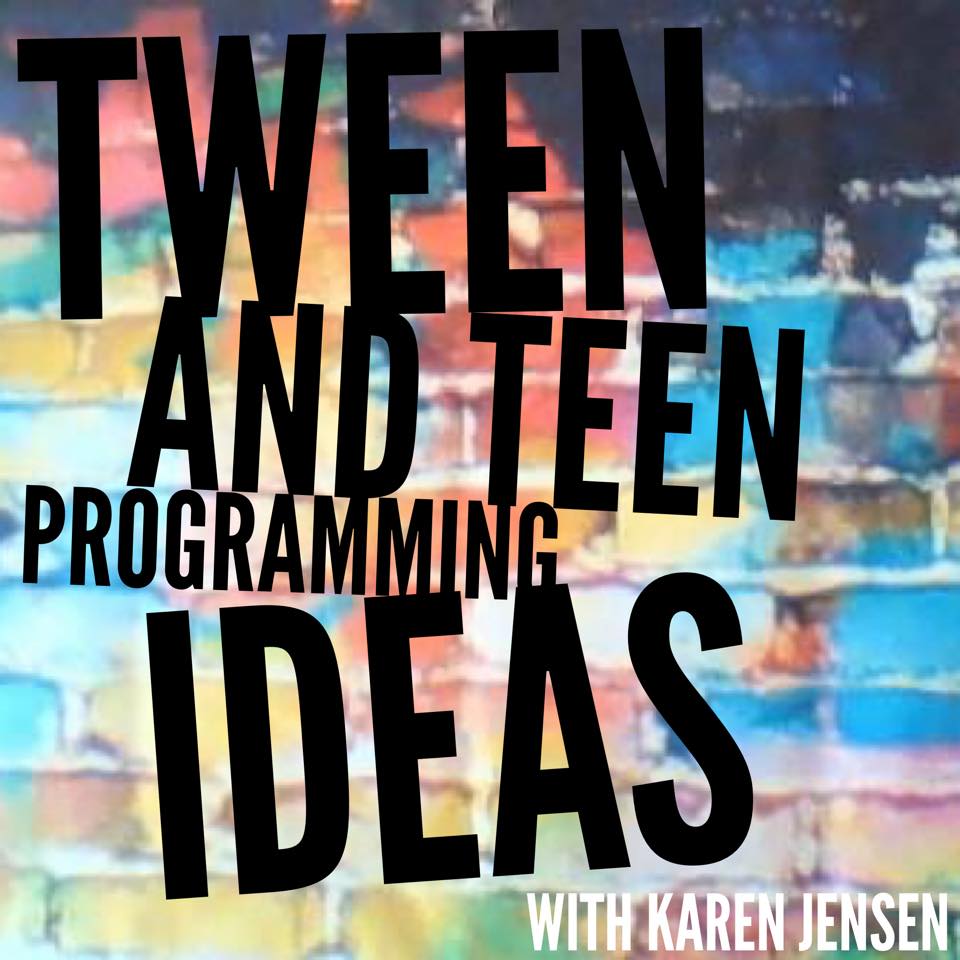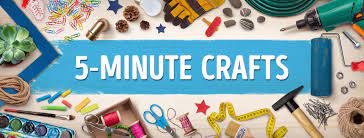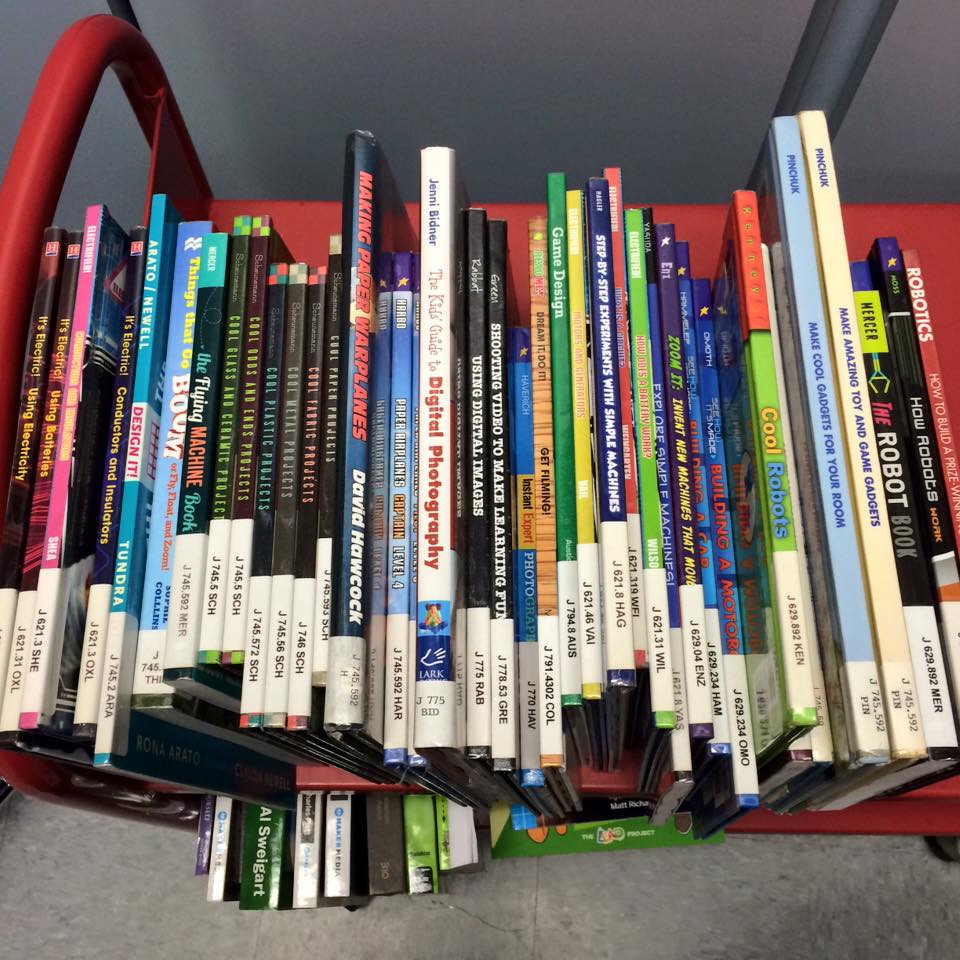Where Do You Get Your Craft Ideas? Part II, by Teen Librarian Karen Jensen

Earlier today, teen programmer extraordinaire Cindy Shutts answered the age old question, “where do you get your craft ideas for your programs?” I thought it was such a great topic for a post that I thought I would piggy back off of it.
First, I want to say I learn a lot from Cindy. She has done programs that I never would have thought about, and on topics that of course are of interest to teens like WWE that, again, I wouldn’t have ever thought about. So her admonition to talk with your library teens is spot on. You should always start there. And you should definitely talk with and follow other librarians. In fact, I make it a point of my weekly routine to visit the blogs and library websites of several librarians and libraries that I find to do innovative and engaging tween and teen programming. But more about that in a minute.
ADVERTISEMENT
ADVERTISEMENT
So if we are talking about where we get our craft ideas from, I want to say yes to everything Cindy said earlier and add these . . .
5 Minute Crafts

I became aware of 5 Minute Crafts because of my own child. She watches it and frequently asks us to try the craft ideas that she sees there. This is how I became aware of things like Hot Glue Crafting, which I used to make a t-shirt stencil template for a program. I find that it just helps to spark my imagination. The other thing about watching 5-minute crafts is that after a while the algorithm works in your favor and it starts to suggest other craft resources to you. I learned, for example, about pour painting because the video just popped up on my feed. There are lots of bad things we can say about the algorithm and misinformation, and they are all true, but on occasion it can work in your favor. If you work at it, you can train your social media to help you discover currently popular crafting ideas.
Cindy mentions Pinterest and this is hands down one of the best resources, in part because it lets you organize and save ideas for future use. I have boards like Lego, T-shirts, MakerSpace and summer reading 202? whatever year it is. You can even share boards with people you trust like co-workers who do programming with you.
#CraftTok
Just as there is a #BookTok on Tik Tok, there is also a #CraftTok. You can search the hashtag on both Tik Tok and YouTube to find a wide variety of craft ideas. You can also search for things like DIY and Hacks, both popular hashtags for ideas that can be turned into great tween and teen programs. These tools can be awesome because they will lead you down a rabbit hole by suggesting other crafters to follow.
Your Book Collection

Don’t forget that you have a treasure trove of ideas right there on your library shelves! One of the things that I thing a lot of libraries don’t do very well is give their staff time to actually look at the books in their collections and this is a mistake. If you are looking for craft and programming ideas, knowing what’s in your collection is a huge advantage. The bonus is that when we pull ideas from our collections, we have naturally built in book promotion opportunities. If you aren’t finding your book collections in your programming ideas, then your tweens and teens aren’t finding what they are looking for in those collections either.
What Comes First, The Chicken or the Egg? A Routine for Programming Idea Discovery
ADVERTISEMENT
ADVERTISEMENT
Programming inspiration can be a wild ride. Sometimes, you see a craft and it sparks an idea in you. Sometimes, you have an idea and you go looking for the craft to help make it happen. I have had moments of richness when it comes to programming ideas and moments of drought, where inspiration and ideas seemed hard to find. Having a routine has helped me in those moments of drought. I go to my bookmarks and visit my resources. I look at the What Day is This calendars for upcoming events that I can tie into. I look to see what other organizations that serve teens around me are doing to avoid duplication. Saving things to Pinterest in case of an emergency also helps. I have found that like with all things, successful programming is part luck and part intentionality. Even things like reading about pop and teen culture is important and helpful.
So what I would recommend to you is this:
Cultivate a list of resources and make it a part of your daily or weekly practice to visit those resources. Give yourself time and space for inspiration to take hold.
Talk to your teens. Not always formally, but casually. Listen to them talk about the things they love right now and see if you can find ways to incorporate that into your programming.
Don’t be afraid to repeat successful programs. We get a new cohort of teens every few years, repeat the things that have worked. Tweak them a bit if it’s called for, but you don’t always have to start from scratch.
And most importantly, make sure everyone – including you – is having fun. If it’s not fun for you, your audience will know and it can set the tone.
Filed under: Programming, Teen Programming
About Karen Jensen, MLS
Karen Jensen has been a Teen Services Librarian for almost 32 years. She created TLT in 2011 and is the co-editor of The Whole Library Handbook: Teen Services with Heather Booth (ALA Editions, 2014).
ADVERTISEMENT
ADVERTISEMENT
SLJ Blog Network
One Star Review, Guess Who? (#214)
Review of the Day: Will’s Race for Home by Jewell Parker Rhodes
Exclusive: Betty & Veronica Jumbo Comics Digest #333 | Preview
Goodbye for now
When Book Bans are a Form of Discrimination, What is the Path to Justice?
ADVERTISEMENT









